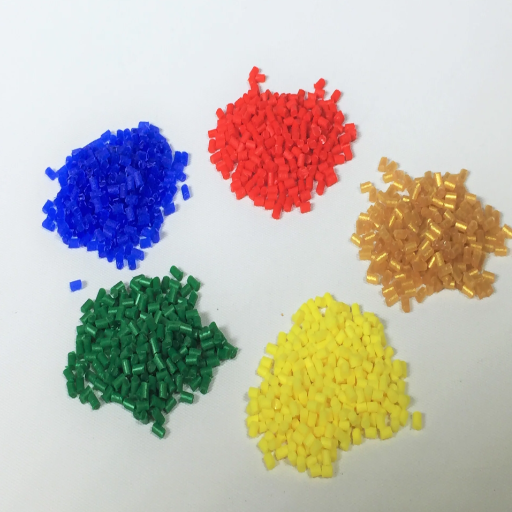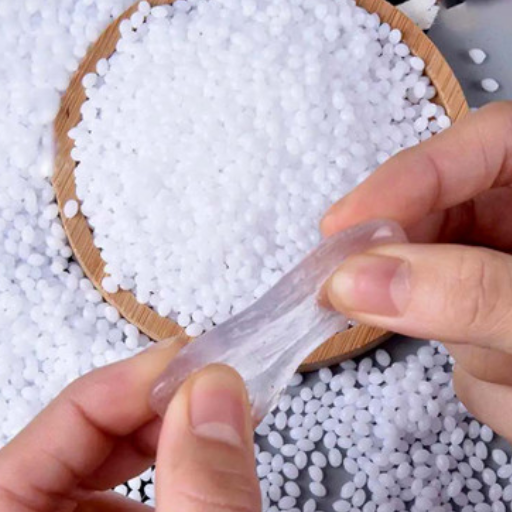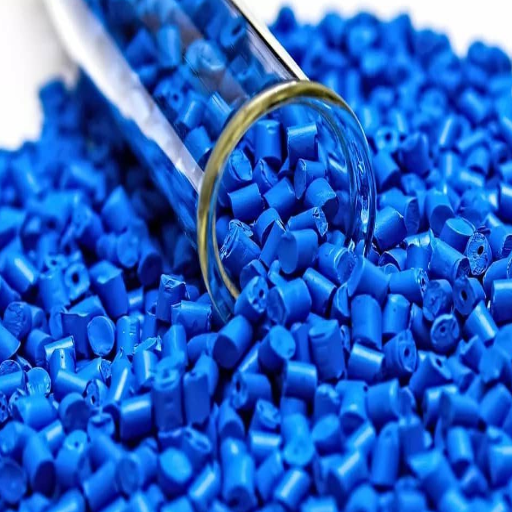Polypropene, called plastic number 5, is among the ubiquitous plastics to be found in use today. This material also has good widespread use as it is found in food packaging, drinking straws, medical devices, cars, and many other items. Despite how widespread it may be, it can be beneficial to understand how to recycle or dispose of polypropylene products as they hold specific characteristics and where they can be recycled. This is intended to clarify the whole process related to plastic number 5 and explain its properties, uses, problems associated with its recycling, and alternative ways of getting rid of it. Ultimately, this post will focus on the most environmentally friendly aspect of the production cycle – the part dealing with polypropylene waste. By understanding the bearings of volume and waste management process, a balance can be achieved for an efficient, sustainable recycling system.
What is PP plastic, and why is it labeled with the number 5 recycling symbol?
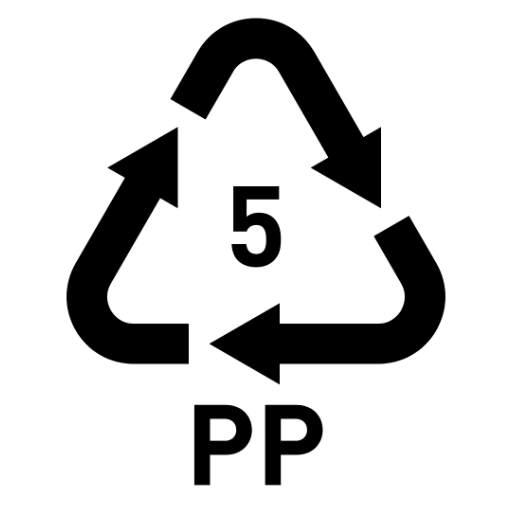
Plastic is one of the most widely used materials in today’s world. One such example is Polypropylene, which is primarily introduced as PP. It remains a thermoplastic polymer and is well-known for its wide array of characteristics, ranging from being lightweight and strong to having the ability to withstand high temperatures and even chemical reactions. This compound can be found in food packaging, drinking straws, and automotive components. It can be recycled, but some processes need to be followed to recycle PP; this means that infrastructure needs to be developed for mass recycling.
Understanding polypropylene: A common type of plastic
Polypropylene (PP) is often ranked number five under the Resin Identification Code (RIC) system, further simplifying the structure and tracing back to where the multi-component plastics originated. This is helpful as it segregates PP from any other form of plastic, aiding the recycling process. Further discussing the recycling process, recycling materials classified as PP must first be transported to a recycling facility where they are cleaned, sorted, and shredded into smaller pellets, which can later be reused. The two hindrances PP recycling faces is the advanced technology required for sorting and moving the proportions of PP into facilities where they would be recycled.
Even with such issues, new technologies are emerging that are increasing PP recycling rates. The most popular of these practices consists of mechanical methods, although developing novel chemical recycling technologies would help regarding contamination and degradation. Such progress has the potential to improve circularity and decrease impact by converting post-consumer polypropylene into feedstock material that can be used again. All in all, logistical and technological gaps still need to be tackled to optimize the recycling process for this plastic, one of the most used worldwide.
Decoding the plastic recycling codes: What does number 5 mean?
The blue code on recycling symbols corresponds to the number 5, which is polypropylene (PP). PP is a fast-developing but widely used plastic found in yogurt cups, bottle straws, food containers, bottle caps, cars, and many other products. Polypropylene could be recycled, but its application is relatively low compared to other plastics due to the difficulties associated with sorting and recycling it. On the other hand, new recycling technologies are making it possible to process polypropylene into valuable materials that will reduce waste and gradually improve environmentally friendly approaches.
Properties and uses of PP plastic in everyday products
Polypropylene (PP) plastic is recognized for its unique traits because it is one of the industry’s most flexible materials. In structural terms, PP is a thermoplastic polymer with considerable chemical resistance, low weight, and high elasticity. It is light but quite robust and can endure abrasions without losing shape. In addition, PP also has a high melting temperature between 130 and 171 degrees Celsius, which means it can be used for quite a few heat-resistant applications.
Because of these characteristics, polypropylene is found in many proper forms in everyday items that are not used in its homopolymer form. It is often used in food-related products such as durable bottles, containers, and dishwasher-safe tools because it can withstand heat and not release harmful chemicals. Since it is resistant to chemicals, it is used in the automobile and industrial sectors in battery cases, bumpers, and car parts. Furthermore, PP fibers are massively used in the textile industry to manufacture carpets, furniture, and insulation materials. Its wide range of applications, low-cost maintenance, and resilience encourages its use in many industries and consumer products.
Is number 5 PP plastic recyclable, and how can I recycle it?
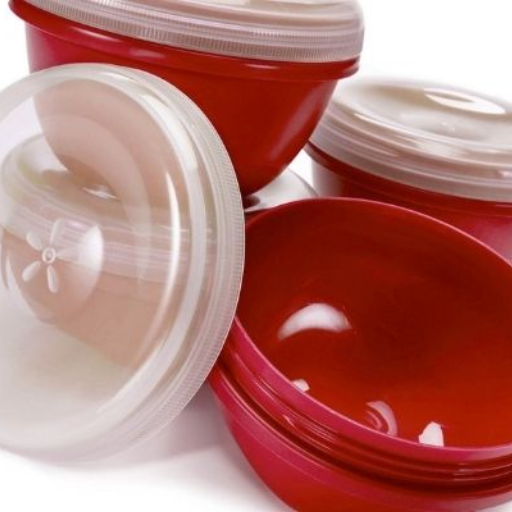
Not all areas are equipped to recycle number 5 PP (polypropylene) plastic, but the best thing is that it is recyclable. Where facilities can cope with it, PP can be processed by curbside recycling methods. PP plastic is not difficult to recycle, provided the items are rinsed and are free of any semblance of food. Other everyday possessions, such as food wrappers, yogurt containers, and bottle locks, must be checked to see if they are crowned with recycling emblem number five before being thrown in the trash bin. If no such services are reachable, PP plastics may be collected by local recycling or drop-off centers instead. Be sure to clarify your specific municipality’s recycling guidelines because they are not uniform throughout the regions.
The recyclability of polypropylene plastic
PP plastic is one of the most used and adaptable polymers and plastics, but it has its snags for recycling. However, PP is claimed to be recyclable; unfortunately, it has become common knowledge that the recoverable volume has become smaller than plastics due to the lack of material market demand and infrastructure. To increase recycling, however, PP products must be cleaned of impurities. On top of that, PP plastics are pretty light and used for various purposes, which creates problems for a sorting facility in correctly identifying them.
Innovative technologies, such as enhanced sorting systems and chemical recycling, are enhancing the recycling process by deconstructing PP down to its constituent monomers for application. However, regions differ in the accessibility of facilities equipped for PP recycling, leaving room for local studies into collection and processing methods. By raising awareness among the surrounding communities and directing resources towards recycling technologies, the circularity of PP can be improved in the long term.
Curbside recycling programs for PP plastic
The availability of curbside pick-up services for PP plastic depends on the location. With the dangers of plastic pollution getting more attention, many communities with well-developed recycling systems are adding polypropylene (PP) plastic to their curbside collections. However, whether or not PP is recycled depends on whether the advanced sorting and processing technologies are already in place. To ensure the program’s effectiveness, I would inspect the local recycling norms to ensure that PP yogurt containers or bottle caps and other clean and food-free requirements are not among the off-limits substances. Increased local investment in recycling technology and the community’s education is necessary for improving PP curbside recycling programs.
Alternative recycling options for number 5 plastics
Where kerbside recycling is not an option, other plastic recycling avenues can be explored for number 5 plastics (also known as Polypropylene or PP). Drop-off recycling programs make it clear that PP items are also accepted. These may be found in local waste management or specialized recycling centers. Plastics number 5, which include caps and lids of common items, have designated stores in places like grocery stores, as they have in-store recycling bins for these plastics.
Moreover, some mail-order recycling services allow members to send in number 5 PP and other plastics through TerraCycle, making it easy for all members to operate. These programs often contain prepaid shipping options for users to dispose of their items. Another possible method includes supporting initiatives incorporating local reports or using repurposed PP to create durable goods, furniture, and construction materials. These methods guarantee that number 5 plastics are effectively recycled when curbside recycling is out of the question.
What are the challenges in recycling PP plastic?
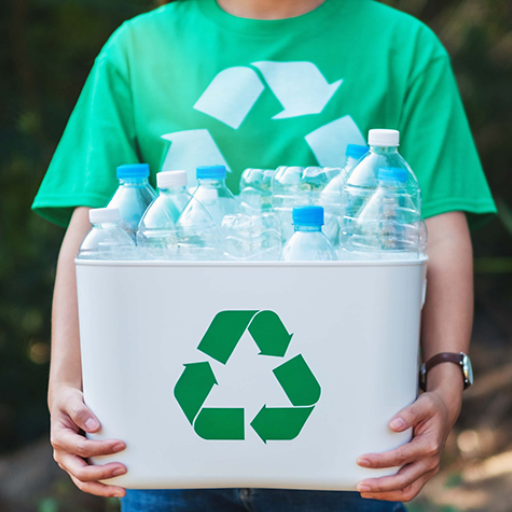
The recycling of polypropylene (PP) plastic exhibits many difficulties, hampering its efficiency and effective uptake. First, PP plastic comprises several additives, dyes, and contaminants, making separating and processing more complicated. In addition, facilities needed for PP plastics recycling seem to be insufficient in PP plastic recycling, leading to low recycling rates. Material’s relatively low market value is another drawback, which reduces the economic motivation for recovering and reusing it. Last but not least, non-harmonized collection systems and consumer awareness add to the problem of recycling PP plastics in an environmentally friendly manner.
Difficulties in the mechanical recycling process
Several obstacles hamper the efficiency and practicality of polypropylene (PP) mechanical recycling. One persistent problem is the degradation of material properties after several recycling cycles, which results in polymer chain breaking and weakened and less usable recycled PP. Furthermore, other factors, such as food remnants, glues, and other substances acting as contaminants, can compromise the quality of plastics and employ costly cleaning processes. Moreover, since the appropriate use of standardized markers and advanced sorting technologies is absent, sorting PP from mixed waste streams raises moral questions by causing contamination with other polymers. More so, the non-homogeneity in the composition and grading of PP waste introduces further recycling challenges as the characteristics of the recycled mixes often do not achieve benchmarks set for virgin plastics. As a result, all these challenges pinpoint the need for novel ways of improving the collection, the processing systems, and the material designs to enhance the mechanical recycling process.
Contamination issues and their impact on recycling
The effect of pollution in recycling, especially concerning polymers like polypropylene (PP), is substantial, to say the least. The most common contaminants include food waste, multi-material packs, glue, and other materials not part of the recyclable waste. These contaminants create obstacles for disaggregation autonomous systems and deteriorate the quality of the recycled material, calling for further washing and sorting stages, which in turn raise the cost of the process. Moreover, too much pollution can render a whole stream of recycled waste unusable, leading it to be either in a landfill or due to fire. Such situations can be avoided by adequately integrating QC metrics in developing A. I separated systems and educated individuals on adequate disposal for means so as not to cover the waste.
Market demand for recycled PP plastic
The global demand for recycled polypropylene (PP) plastic material has been rapidly rising due to its increasing scope of use in different sectors and a rise in environmental concern. Major drivers of this demand include the packaging industry, where recycled PP is used extensively for containers, caps, and films, and the automotive sector, which utilizes it for lightweight components. Businesses and individuals worldwide favor PVC due to the growing emphasis on legislation in various countries and regions. However, challenges such as inconsistent quality and supply limitations continue to impact market growth. Addressing these hurdles through advanced technology and strong supply chain management will be paramount in satisfying this demand.
How does PP plastic compare to other recyclable plastics like HDPE and LDPE?
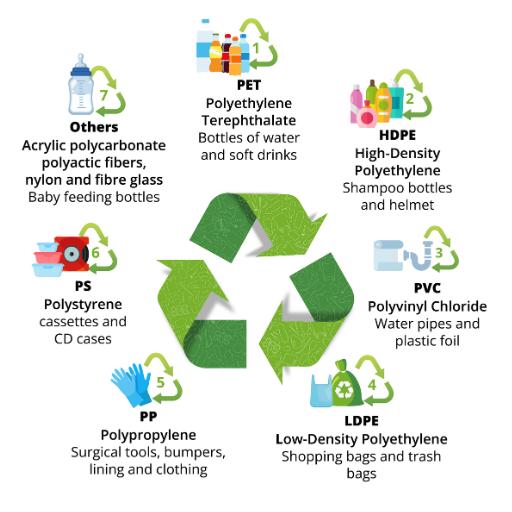
The HDPE (High-Density Polyethylene) and LDPE (Low-Density Polyethylene) polypropylene (PP) plastic have a noteworthy distinction in their mechanical properties, applications, and ways of recycling. The higher temperature resistance and rigidity allow the polymer polypropylene PP to be an ideal option for car parts, medical equipment, and food containers. These appliances are made of LDPE and HDPE. HDPE, however, has far better strength and impact resistance, which are essential to heavy-duty items like piping and detergent bottles. LDPE is more flexible and less rigid and is ideal for applications requiring plastic bags and shrink wrap, allowing more excellent pliability. All three materials can be re-cycled, but while PP lags in the re-cycling race due to issues with the collection and sorting of structures, HDPE can do better because it has more advanced recycling systems.
Comparing recycling rates of different plastic types
These factors explain why the recycling rate differs from one plastic type to the next since the rate of recycling of high-density polyethylene ranges roughly between 25 to 30 percent while appealing container squeeze tubes that are replaced with polyethylene terephthalate or clear containers consistently gain in the long run substantial development due to apparent demand in the consumption market. PEHD plastics have a developed recycling system that is efficient and more integrated into the product’s lifecycle.
Similarly, Low-Density Polyethylene (LDPE) and Polypropylene (PP) are recycled much lower than other polyethylenes. On one side, LDPE is flexible and can be used in many applications. Still, it’s more challenging to sort and process because its scraps are usually contaminated with film and bag usage. Likewise, PP also has a low recycling percentage because there are no staples of supply and sorting to recover them. Yet, they are present in various items, from food packaging to containers. These inequities need to be rectified through benchmarks in the recycling facilities and higher consumer contributions.
Unique properties of PP plastic affecting its recyclability
Polypropylene (PP) plastic has a few properties that make it recyclable. First, it has a low density and high melting, which makes it difficult to sort and remold other plastics. Moreover, PP is modified with fillers or additives for enhanced performance in the given areas, making recycling complicated. Food pollution and poor collection systems also significantly reduce PP recycling efficiency. In tackling these issues, advanced sorting and purification techniques and unitary collection systems will need to be adopted to increase material recovery rates.
End products made from recycled PP vs. other plastics
Recycled polypropylene (PP) is mainly used in applications requiring strong, lightweight, and chemical-resistant materials. It is often used in automotive parts, such as battery cases and bumpers, as well as industrial uses, such as storage boxes, landscape supplies, and pipes. Due to PP’s characteristics, high melting point, and firm structure can withstand many applications, thus eliminating the risk of losing performance after recycling.
On the other hand, polyethylene terephthalate (PET) and high-density polyethylene (HDPE) are recycled into bottles and other items such as containers, packing materials, textile garment fibers, and materials for construction, including plastic lumber/decking. Because of PET’s good clarity and high tensile strength, it is possible to use PET for food-grade reuse products. At the same time, the rigidity and resistance of HDPE make it ideal for other uses such as detergent bottles, outside furniture, and waste bins.
Among the advantages of recycled PP over other materials, the wide range of uses in the automotive and industrial sectors is especially significant. Page 2 Although the recycling rate of PP is relatively lower compared to that of PET and HDPE, this speaks about the problems in PP recovery and consumer awareness regarding the use of plastic materials. New recycling facilities and technologies for material recovery must be developed to expand the boundaries of final products custom-made from recycled PP and bridge this gap.
What can consumers do to improve PP plastic recycling?
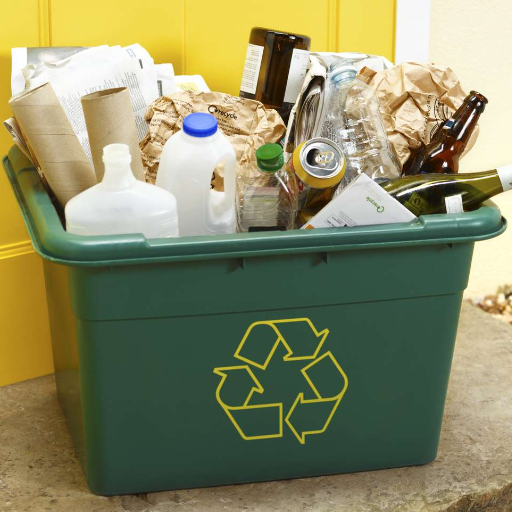
Consumers are encouraged to enhance the recycling of PP plastic by locating and sorting the PP items that must be thrown away and ensuring that they are disposed of in the correct recycling bins. They can learn about local recycling policies to avoid contamination and make sorting materials more efficient. Consumers can also purchase from companies that manufacture products from recycled PP and lobby for more resources to be directed toward recycling. They can also educate their friends and communities on the need to recycle PP to encourage more people to recycle.
Proper cleaning and preparation of PP containers for recycling
Rinsing and preparing the containers properly by cleaning them is the first step towards ensuring the successful recycling of polypropylene (PP) containers. Containers should only be rinsed out and should not contain any food particles, grease, or liquids because such contaminants would interfere with and reduce the quality of the recycled materials. Warm water and mild dishwashing soap can wash the container thoroughly. It is best to leave the labels and glue remnants on the material since most facilities can remove them, but manually removing large stickers may help with sorting later.
In the second place, the containers should contain only PP elements and never zinc covers, silicone parts, and mixed material labels, which could impede the recycling systems. Most of the time, recycling numbers/page 5 on the containers is a reliable and confirmable means of identifying the PP container materials; this code also gives information about the environment where such an item is being recycled. Lastly, after washing the containers, kindly let them dry completely before throwing them into the recycling bins to avoid wetness that could interfere with other items that are being recycled. How consumers follow these detailed steps is essential as they help improve the possibility of recycling and reusing PP items.
Reducing contamination in the recycling stream
To eliminate contamination and adhere to the recycling process, sorting and cleaning the materials thoroughly is essential. Only the adequately cleaned items go into the bin, and these items must not have any food remnants. Further rinsing makes this possible while at the same time making it possible for me to limit the items to those meeting the recycling program in my neighborhood. There is the need to eye prizes and awards, such as deposits and non-deposit outlawing, because good recycling always encourages eliminating unwanted and non-recyclable items. Also, I look for the specific types of symbols and codes on items so that I have a lesser chance of contaminating the whole batch; hence, it is essential to avoid unnecessary issues. Keeping up with these good practices and understanding the policies in your local papers will undoubtedly increase the productivity of all recycling activities.
Supporting local recycling initiatives for number 5 plastics
Number 5 plastics refers to polypropylene, the plastic used for yogurt containers, bottle caps, and food storage containers. Even though they are practical, recycling such kinds of plastics can be difficult because there are not many processors available. To efficiently contribute to local recycling schemes, people should first check whether there are municipal waste programs that accept number 5 plastics, which have been noted to vary extensively from one region to another. Or, there might be community drop-off sites or specific programs such as TerraCycle or Gimme 5 from Preserve aimed at recycling these materials. Number 5 plastic recycling programs could be upscaled by making them more available and informing others how to sort them properly. Moreover, this stresses that more single-use items should be avoided since such action would reduce the amount of waste produced, encouraging the use of reusable or alternative materials.
Are there alternatives to recycling PP plastic?

The best ways to minimize or seek alternatives to recycling polypropylene (PP) plastic are by seeking sustainable means and minimizing its usage. One such option is to replace PP plastic with biodegradable plastic such as polylactic acid (PLA) or compostable bioplastics whenever possible. Also, instead of throwing away strong, durable PP products, a circular economy can be established by allowing them to be reused. Another way to reduce the dependency on PP plastic is by encouraging product redesigns to eliminate extra plastics and using glass, metal, and paper as alternative product packaging. All in all, these strategies aid the recycling initiatives as they help reduce the generation of plastics in the first place.
Reusing and repurposing PP plastic products
Polypropylene (PP) plastic products can be reused and recycled as an alternative solution to reducing the degradation of the environment. Redundant items such as containers, storage bins, and other strong PP products can be recycled and given a more useful purpose, such as reducing pollution of the environment. For instance, PP containers can be reused as organizers to organize tools and used for home improvement or gardening projects.
Industries, for example, can practice regrinding or remanufacturing used PP products, which would help reduce the consumption of new plastic raw materials and encourage the recycling of PP. Moreover, to move towards a circular economy model, industries operate with closed-loop systems that ensure proper collection, processing, and reuse of PP wastes.
In addition, educational campaigns and other social activities highlighting practical uses of PP plastics could also help boost behavioral change and educate people on the properties and lifespan of these materials. With these methods, societies could decrease plastic waste while extending the useful life of PP products.
Biodegradable and compostable alternatives to PP plastic
Even though conventional industries are heavily saturated with polypropylene (PP) plastics, opting for biodegradable and compostable alternatives may significantly help reduce the harmful consequences. Biodegradable materials have a low reliance model as they are manufactured from renewable resources, including corn starch and the process of microbial fermentation, such as polylactic acid (PLA) and polyhydroxyalkanoates (PHA). These resources are more readily available and are not depleting. The PP conventional material would take longer to compare to these alternatives for composite material. Even though the processes may be energy-heavy or provide a low-strength counterpart compared to PP plastics, bioplastics’ technological advancements have improved their broad applicability range.
Reducing overall plastic consumption
To minimize the use of plastics, the way that people behave and the systemic transformations of various sectors have to be approached in an integrated manner. On an individual basis, replacing plastic with iron straws, cloth shopping bags, and glass containers is a way to use more reusable items. Also, developing practices of buying in bulk, purchasing vegetables and fruits without packaging, or taking one’s water bottle reduces waste.
More generally, sectors can shift from a linear economy to a circular economy, focusing on designing for disassembly, using green materials, and reducing product packaging. A significant part is played by the states that can adopt various measures like prohibiting single-use plastic products, encouraging businesses to develop new materials, and expanding the networks of recycling facilities. Slides worldwide viewership growth during this vigil time point only amply global plastic pollution nexus of all these levels can address environmental issues stemming from the high consumption of plastics.
References
Frequently Asked Questions (FAQ)
Q: What is Number 5 PP plastic, and why is it important to recycle plastic?
A: Number 5 PP plastic, or polypropylene, is an ordinary plastic used in food containers, bottle caps, and other packaging. Recycling plastic, including PP, is crucial to reducing plastic waste and conserving resources. While not all plastics are recyclable, PP is increasingly accepted by recycling centers, making it essential to understand and properly dispose of this material.
Q: How can I identify Number 5 PP plastic for recycling?
A: Look for the recycling symbol (a triangle made of arrows) with the number 5 inside on the bottom of plastic containers. This number inside the triangle indicates that the item is made of polypropylene. It’s important to check this code as different types of plastic require different recycling processes.
Q: Which everyday household items are made from Number 5 PP plastic?
A: Number 5 PP plastic is used in various items, including food containers, medicine bottles, bottle caps, straws, and some plastic bottles. It’s also found in reusable containers, plastic cutlery, and certain automotive parts. Recognizing these items can help you properly sort your plastic waste for recycling.
Q: Are all plastics recyclable, and how does Number 5 PP compare to other plastics?
A: Not all plastics are recyclable, but recycling facilities increasingly accept Number 5 PP. Compared to other plastics, PP is more heat-resistant and durable, making it suitable for food containers and reusable items. While it was once tricky to recycle, many recycling centers now accept PP, unlike other plastic types that can’t be recycled easily.
Q: How should I prepare Number 5 PP plastic for recycling?
A: To prepare Number 5 PP plastic for recycling, rinse the containers to remove any food residue. Remove labels if possible, and ensure the items are dry. Separate bottle caps from bottles, as they’re often made from different plastics. Check with your local recycling center about specific guidelines, as some may accept plastic bags or other flexible plastics made from PP.
Q: What happens to Number 5 PP plastic after it’s collected for recycling?
A: After collection, Number 5 PP plastic is sorted, cleaned, and shredded at recycling facilities. The shredded plastic is then melted and formed into pellets. These pellets can create new plastic products like lumber, car parts, or food containers. Recycling polypropylene helps reduce the amount of plastic waste in landfills and conserves resources.
Q: Why was Number 5 PP plastic previously difficult to recycle?
A: Number 5 PP plastic was once challenging to recycle due to limited demand for recycled PP and lack of appropriate recycling infrastructure. However, as recycling technologies have improved and awareness has increased, more recycling companies and facilities have accepted PP. The plastics industry has also made efforts to improve the recyclability of PP, making it easier to recycle and reuse this standard plastic.
Q: How can I reduce my use of Number 5 PP plastic if my local recycling program does not accept it?
A: If your local recycling program doesn’t accept Number 5 PP plastic, consider these alternatives: Use reusable containers instead of single-use plastic, opt for products packaged in easily recyclable materials, repurpose PP containers for storage, or look for specialized recycling programs in your area. Remember, reducing overall plastic consumption is just as important as recycling.

